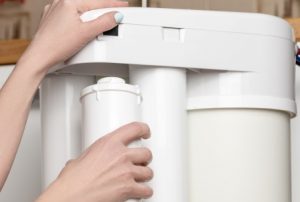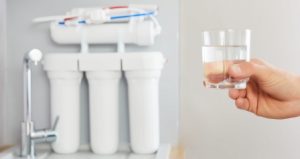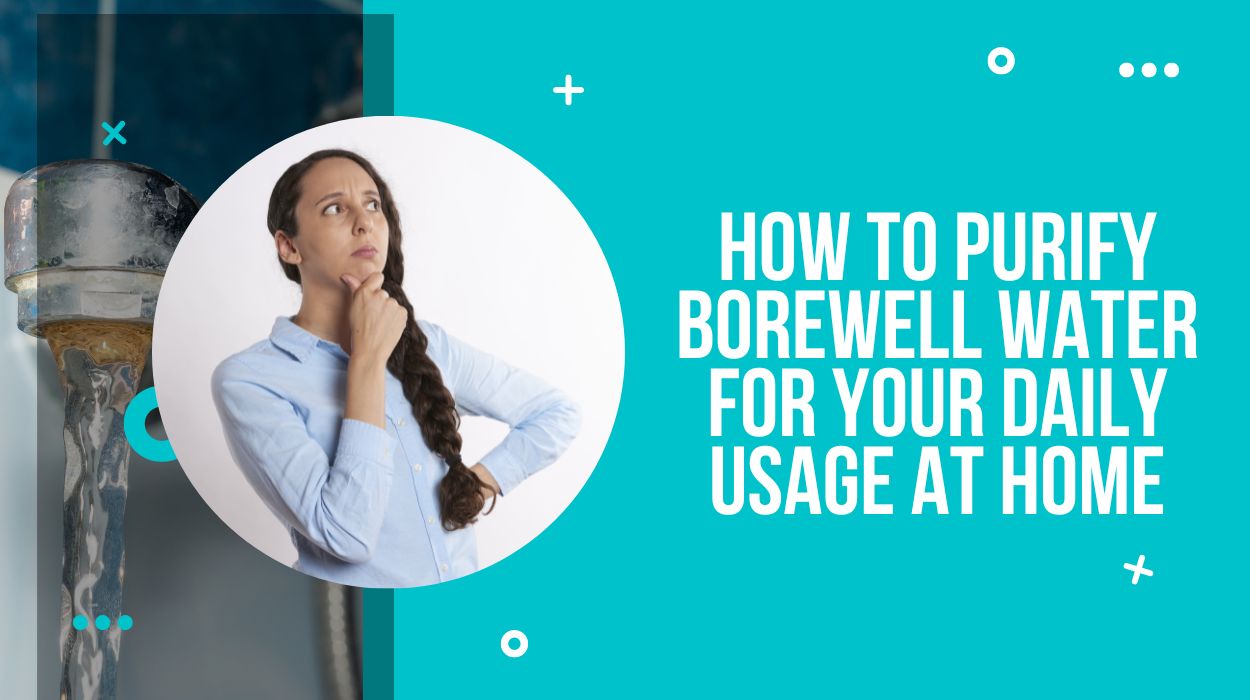Borewell water is one of the primary sources of water around the world. But one of the significant concerns that come with borewell water is purity. Borewell water is high in contamination and hardness, making it difficult and unsafe for people to consume. It might contain heavy metals like lead, arsenic, fluoride, various viruses, bacteria, etc. Due to which it becomes essential for us to purify this water along with reducing its TDS.
In this article, I’ll explain all the techniques you can use to prevent TDS in water and purify it and make it safe for consumption.
So Stay tuned!
4 Different Ways To Purify Borewell Water at Home
Purification of borewell water might feel like a lot of work, but in reality, you can effortlessly purify water at your home by following these methods:
1. Invest In A Water Purifier

You can get rid of impurities found in borewell water using a good quality water purifier. It is the most suitable solution to get rid of annoying odor, contaminants, taste, and color of borewell.
An RO water purifier can help prevent leads, arsenic, iron, and other chemicals found in hard water and transform them into soft water suitable and safe for drinking.
RO purified water can be used for several household purposes like cooking, drinking, and bathing. These water purifiers are a bit expensive but provide the best results when it comes to purification.
Therefore, it is suggested for everyone to invest in water purifiers for safe water. Even though You can use RO purifiers water for cooking, drinking, and bathing, there are various other household purposes where you can’t use this water.
So, as per the RO rejected water, you can use it for several other household purposes like cleaning floors, toilets, watering your plants, and more.
2. Use Alum

Mud getting mixed into the water is one of the most commonly faced issues with borewell water. But even with mud involved in the water, you can still purify it using Aluminium Sulphate (Alum).
For this method, start with pouring alum into an open well, or you can even add this alum into a tank where you have stored borewell water.
Alum is an element that can be used for purifying the water and primary settlement of sediment. The quantity of alum plays a significant role in purifying the water. The right amount of alum can make the purification method quick.
For example, if you have around 5 to 10 liters of water present in a tank, then 50 gms of alum can be perfect.
If you perform this purification process in a well, then 50gms of alum can be used for 6 meters. Once you have added alum leave this water for 24 hours, and then the mud or dirt will directly sit in the bottom, separating it from the water.
Apart from mud and dirt, if there aren’t any other impurities in the water, you can simply cartridge filter then start using this water as it has purified.
3. Purification System
Getting a bad smell from borewell water is quite common. This issue occurs due to the sulfide and other gases present in the borewell, which would often lead to a bad smell.
Sometimes it can even showcase a smell like rotten egg, which keeps most people away from using it. Even though this smell can be disgusting, you can still cure it and make it suitable for drinking by using a water purification system.
These systems contain charcoal and carbon filters that can help you eliminate these bad smells and prevent any potential bad taste—providing you with safe and purified water suitable for drinking.
You can look for a purification system anywhere as they are quite easy to find and install in your kitchen to solve bad smells and even taste issues.
Besides just getting the purification system, it is also required that you follow other borewell maintenance methods like scanning, cleaning, drilling, re-bore, and more.
4. Remove Iron

Heavy metal like iron is most likely to be found in borewell water which can cause various health issues if consumed. So, it becomes crucial to remove this iron from the borewell water.
You would require an expert to perform an oxidation method so the iron salts can become insoluble and easily sit under the water. For the oxidation process, numerous ways like ozonization, aeration of well water, or chlorination of water.
This method isn’t that difficult and can be done at home. Once the oxidation process has taken place, you have to filter this water to purify it.
How To Reduce TDS In Water
Total dissolved water (TDS) is the dissolved substance that is found in the water. The most regularly found inorganic salts in water are magnesium and calcium.
TDS found higher than 500ppm in water are considered unaccepted for consumption as they can cause significant health issues. Due to which it is essential to reduce these high TDS levels to make them acceptable and safe for consumption.
Here are some methods available through which you can reduce TDS found in water:
1. RO Water Purifier

The best solution to reduce these high TDS levels is by installing a reliable and effective RO water purifier. These purifiers were invented with advanced technology, which can help reduce the hardness level of the water.
RO water purifiers help reduce the high level of TDS by forcing the water into a fine membrane with pores that are microscopic, which can assist in removing all the unhealthy particles, even the smallest ones.
When water gets passed through the purifier, several heavy metals like arsenic and lead get removed. Along with TDS, these purifiers also help get rid of the bad smell and taste present in the water, making it suitable for people to drink, cook, etc.
2. Distillation

If the amount of TDS found in water is low, you can use the water distillation method. This process involves boiling or heating water, which helps remove the contamination and impurities present in the water.
The distillation method is one of the easiest and oldest methods used for treating hardness in water to make it suitable for consumption. However, this water distillation process might not be that effective in a notably high TDS level, and you would require a RO purifier for that case.
3. Deionization
Deionization is another method that you can use if the level of TDS is not that high. This process involves removing TDS through the ion exchange method. It controls the electric charge of ions in the water to remove total dissolved water.
It uses two resins opposite in terms of charges, one being anionic (positive) while the other being cationic (negative). These cationic resins help attract the positively charged ions in the water while releasing hydrogen in equivalent amounts.
Anionic resins attract negatively charged ions while releasing hydroxide in an equal amount. This released hydroxide and hydrogen unite and form water. At a certain level, two resins can be ionized, either it is weak or strong.
A cationic resin can be strong, or weak acid same applies to anionic resin. It can be a strong or weak base. A strong ionization will provide a high degree of ion exchange, but it can reduce the capacity or shorten the filter cartridge life.
Meanwhile, a weak ionization will only exchange the weak ion providing a longer filter cartridge life or greater capacity.
You should know some of the ions may not be attracted towards the resin; therefore, running the DI water in the second cycle will provide an additional purification.
Also, it is essential to run the filtered water through a test of TDS meter after every process to determine the DI system’s effectiveness.
FAQs
What amount of TDS in water is considered ideal?
Around 300 to 500 ppm is considered as ideal as it can be used for consumption. However, any TDS level above 500 isn’t considered great, due to which it becomes essential for you to go through purification or filtration.
Why is borewell water yellow in color?
It is very natural for small organisms like bacteria, iron, and more to occur in water which doesn’t cause a disease or health condition but rather leaves a tint in water. This yellowish color occurs when this bacteria gets mixed with magnesium or even iron, due to which they are yellow in color.
What causes smell in borewell water?
The hydrogen sulfide present in borewell water causes a bad smell. It occurs naturally through the well or anywhere.
You May Also Like To Read:
Convert Hard water to Soft Water
Ways to Save Water in Your Home
Conclusion
Purification and reduction of TDS are essential to ensure your health and safety. Here we mentioned various steps and methods through which you can instantly reduce the high level of TDS and purification of the water.
All these methods are simple and comfortable to perform and use. By following these methods, you can ensure that you are getting healthy water without any bad taste or smell.
If you have any queries regarding purification or TDS in water, then tell us in the comments.



I could not find any solution for getting tank water required for general use in large quantities i.e. other than drinking,free from sedimentation.